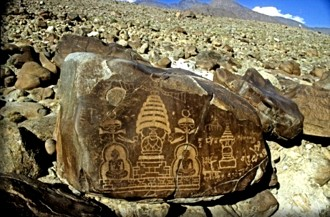A joint China-Pakistan archaeological survey team led by Chongqing Normal University for the project of conserving the Upper Indus Rock Painting Corridor held its opening ceremony in Bahawalpur on November 6.
The Upper Indus, adorned with Buddhist rock paintings and Chinese inscriptions, stands as a testament to the historical richness of the local community and holds universal significance. Dating back to periods between 5000 B.C. and A.D. 1000, these rock paintings offer valuable insights into the lives and beliefs of ancient civilizations that traversed the trade routes.
Recognizing the profound cultural value, the collaborative efforts of the Chinese and Pakistani governments aim to preserve these ancient artworks. The joint archaeological survey team comprises experts from institutions such as Chongqing Normal University, Xi’an Jiaotong University, Lanzhou University, and Pakistani entities like the Higher Education Commission Corridor Authority, University of Bahawalpur, and Punjab Archaeology Department.
Over a 3-year period, the project team will conduct comprehensive field investigations, surveys, academic seminars, and personnel training to protect major sites and artifacts in the project area. Crucially, the initiative actively involves local communities in capacity-building endeavors, fostering awareness and a sense of ownership among residents.
The positive impact of conserving the Upper Indus Rock Painting Corridor extends beyond cultural preservation, potentially boosting tourism in the region. As the site becomes more accessible and well-preserved, it is poised to attract both domestic and international tourists, contributing significantly to the socio-economic development of the area. This collaborative effort exemplifies the mutual commitment of China and Pakistan to cultural heritage and international cooperation in archaeology.
















